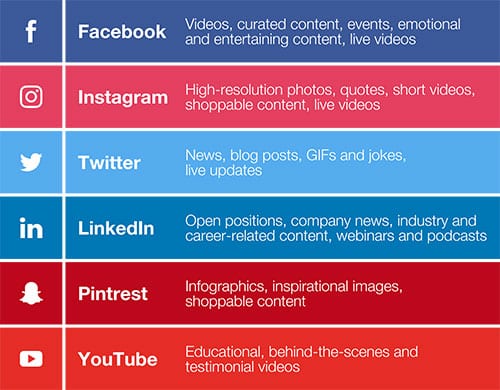
Here are three steps that will help you determine the best social media platforms for your business.

Source link: https://sproutsocial.com/insights/new-social-media-demographics/
Here’s a breakdown of the types of content that are best for each social media platform:

Types of interaction:
The more users interact with your posts, the more likely they are to like and follow your page, which increases their engagement and improves your brand awareness with other users.
Examples of posts that encourage engagement:
When interacting with your followers, remember to be consistent with your brand’s voice while still sounding human. Acknowledge comments as soon as you can and respond to all reviews, positive and negative. It’s helpful if you set aside a specific time every day to catch up on your social pages.
Eager to jumpstart your social media campaign? Click here to start the conversation.
Share article
© 2022 TouchStone Digital. All Rights Reserved. Privacy Policy. Careers.